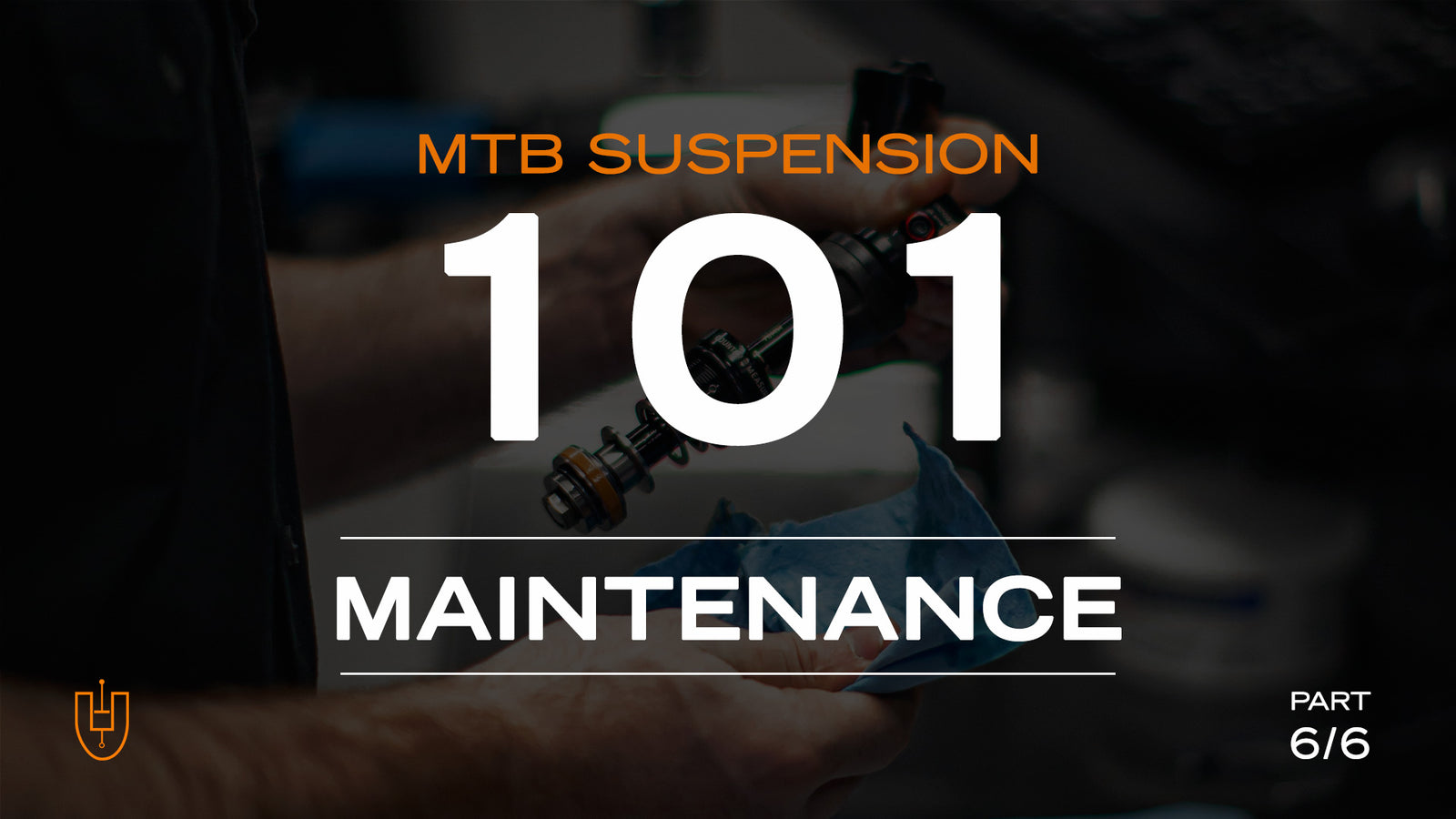MOUNTAIN BIKE SUSPENSION 101: Servicing & Maintenance (Part 6 of 6)

You’ve just spent $3000+ on this fancy mountain bike with suspension, and the last thing you’d want is to spend more money. Mountain biking can be expensive, but it can be less expensive when you stay on top of maintenance. But let's face it, nobody wants to spend a ton of time and money doing more maintenance than is necessary.
Proper maintenance is key to the health and longevity of anything with moving parts and often it’s the lack of knowledge that keeps us from properly caring for our things and procrastinating doing it. What does it mean? There are many parts on the bike that require maintenance, however when maintaining suspension, common things we can do include:
- Knowing how to clean your bike / cleaning your fork and shock
- Inspecting your fork and shock regularly for damage
- Keep track of your riding time
- Performing lower leg services (fork) or air can services (air shock)
- Getting it fully serviced as recommended by manufacturer
Why do it?
Just like your car needs regular oil changes, mountain bike suspension performance deteriorates and can cause more (expensive) damage if left unattended. Naturally, the more frequently you stay on top of maintenance, the better your fork and shock will perform.
When to do it?
It’s difficult to notice when your suspension performance slowly degrades over time. Don’t wait until you notice a lot of gunk build-up around your seals to get your suspension serviced. And certainly don’t wait until it starts making strange noises, or it feels like you’re riding a jackhammer. Though manufacturers have service interval recommendations, sticking to them isn’t always sufficient if you’re riding in dusty or muddy conditions. Most of the time, you’ll have it serviced and have an ‘ah-ha!’ moment afterwards, of what it feels like to have everything running smoothly again.
Service intervals from manufacturers are based on riding time:
|
Brand |
Fork Recommendation |
Shock Recommendation |
Service Info |
|
Fox |
Lower Leg Service every 50hrs? Full Service every 125hrs or yearly (whichever) comes first |
Full Factory Service every 125hrs or yearly (whichever) comes first |
Documentation here. Coil shock documentation here. |
|
Rockshox |
Lower Leg Service every 50hrs Full Service every 100-200hrs (depending on model) or yearly. Whichever comes first. |
Air Can Service every 50hrs Full Service every 100-200hrs (depending on model) or yearly. Whichever comes first. |
Lowers: https://www.youtube.com/watch?v=q71iSEEuiw0 https://www.servicearchive.sram.com/service/rockshox/7 |
|
Ohlins |
Lower Leg Service every 50hrs Full Service every 100hrs or yearly (whichever) comes first |
Air Can Service every 50hrs 100hr service 200hr service |
Documentation here. |
|
DVO |
Full Service every 150hrs or yearly (whichever) comes first |
Full Service every 150hrs or yearly (whichever) comes first |
Documentation here. |
|
Cane Creek |
Lower Leg Service every 50hrs Full Service every 100hrs or yearly (whichever) comes first |
Every 100 hours of riding time (or annually) |
Documentation here. |
Knowing how to clean your bike / cleaning your fork and shock
This may be a 101 but we’re not really going to show you how to clean your bike. Instead, we’re going to leave you with this important piece of advice:
Never point a hose or pressure washer anywhere near your seals. You’ll also want to steer clear of any frame bearings.
Doing so can actually push dirt through and compromise their longevity.
When cleaning your bike, use mild soapy water, rinse with a very light pressure water spray, and take care not to spray water directly at the seals and bearings. Dry it with a clean, soft cloth.
Do not use any solvents or degreasers as these can damage exterior finish and anodized parts.

What is a lower leg service?
A lower leg service usually involves cleaning the lower legs and seals out, re-lubricating the seals and replacing the oil.
Servicing your fork lower legs is relatively simple to do yourself with minimal tooling and only a little bit of knowledge required. We highly recommend that any serious mountain biker learn to do this.
What is an air can service?
An air can service is a similar concept to a lower leg service for your fork, however it is done on a shock. It involves opening up the air can, cleaning the internals, inspecting for damage, re-lubricating or replacing the seals, and replacing the oil.
What is a "full service"?
A full service involves a teardown of the fork or shock’s internals, so both the spring and the damper are inspected. Moving seals (and any static seals that may need it) within those systems are replaced, oil is replaced, and you get fresh wiper seals too.
This can be more technical and very easy to get wrong - there are service manuals from manufacturers available if you wanted to tackle it yourself, otherwise it would be best to leave it with a professional.
What happens if I don't?
Performance will continue to deteriorate over time, and it will likely cause more expensive damage in the long-term.
In conclusion, frequent servicing of your fork and shock is a simple way to extend the lifespan of their internals. In the long run, it will reduce the possibility of damage and replacement of parts that break or wear out due to neglect. Making maintenance a priority will make your parts last longer, and allow you to get the most out of your suspension.

